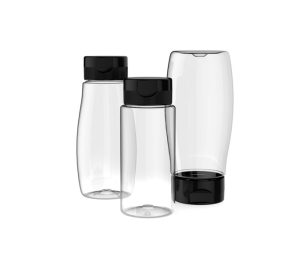Sustainable packaging is a type of packaging that helps to reduce the ecological footprint and improve sustainability in the long run. The concept is similar to recycling, which is reusing and recycling materials. It involves several practices, including increased use of life cycle assessment and inventory.
Reusable plastic
Using reusable plastic packaging is a way to minimise the damage to the environment caused by products that are used. It also can reduce the amount of raw material needed to produce a product and the carbon emissions associated with its transportation. In addition, it prolongs the lifespan of the product.
Many businesses have adopted sustainable packaging in response to consumer demand and the rising awareness of sustainability issues. However, it still needs to be widely adopted. In fact, as of 2019, only 2% of plastic packaging was reused.
As a result, many companies are reassessing their packaging portfolio. Some are investing in new technology and redesigning their products to be more reusable. Increasing the use of recycled materials is another strategy. However, while more and more businesses are making the switch, many are faced with a plethora of challenges. The biggest hurdle is regulatory change. In France, for example, the government has set specific targets for using plastics that can be reused or recycled.
Recyclable materials
Sustainable packaging is the act of using recyclable materials to create packaging. Using recycled and biodegradable materials is a great way to help the environment while keeping packaging out of landfill. Recyclable materials can include cardboard, paper, plastic, and metal. These can be reused to create new products.
One of the most eco-friendly types of recyclable materials is corrugated cardboard. It is a thinner material without fluting, which means it retains its properties during transportation. The next step in recycling corrugated cardboard is sorting the materials. Another eco-friendly material is an aqueous coating. This water-based coating seals ink on the packaging and makes it more environmentally friendly. It comes in various finishes.
Another environmentally friendly material is cellulose, which is a natural material. It has the same properties as plastic, but it can be recycled. Therefore, it is a more sustainable option than plastic and can be a good choice if you are looking for an alternative to the ubiquitous plastic bubble wrap.
Compostable materials
 The concept of sustainable packaging is getting more and more attention. Consumers are looking for environmentally friendly packaging that doesn’t create waste and can be disposed of responsibly. There are many different types of materials you can use for sustainable packaging. Some of the most common are compostable or biodegradable. You may also find organic or plant-based materials.
The concept of sustainable packaging is getting more and more attention. Consumers are looking for environmentally friendly packaging that doesn’t create waste and can be disposed of responsibly. There are many different types of materials you can use for sustainable packaging. Some of the most common are compostable or biodegradable. You may also find organic or plant-based materials.
If you’re unfamiliar with compostable materials, it’s a type of plastic that decomposes naturally. These materials include compostable containers, food service containers, and flexible packaging. When using these materials, you should make sure to recycle them properly. Some will only break down at special compost facilities, while others can be home compostable. Nevertheless, using recycled materials is a great way to help the environment.
You can also consider using compostable materials for other uses. For example, you can use these materials for thermal insulation or grow-it-yourself lamp shades. This could be a great option if you live in a region with no recycling infrastructure.
Biodegradable materials
Biodegradable materials are a great alternative to plastic packaging. They do not pollute waterways and are made from natural materials. They can also help reduce solid waste.
In addition to making the environment more sustainable, biodegradable materials can help reduce production costs. This helps companies meet environmental compliance standards. It also attracts new customers who want to purchase products with a low environmental impact.
Plant-based materials are growing in popularity. This includes hemp and organic fabrics. These are more eco-friendly than petro-based alternatives and offer real business value.
Bamboo is another eco-friendly material. This is one of the fastest-growing plants on earth and is used for various purposes. In addition to being durable and compostable, it’s also non-toxic. As a result, it’s commonly used in high-quality eco-friendly garment bags. Finally, mushrooms are also a tremendous biodegradable material. They are made from mycelium, a type of fungus, and can be moulded into various shapes.
The Growing Industry of Sustainable Packaging
Sustainable packaging is a growing industry. It is a way to design packaging for long-term recyclability and to reduce food waste. Companies are working on more innovative and cost-effective packaging to meet the demands of today’s consumers. However, companies must first develop a framework for sustainable packaging decisions to make a positive impact. This includes a systematic approach to internal business data analysis. They must also conduct periodic audits of their sustainability strategies.